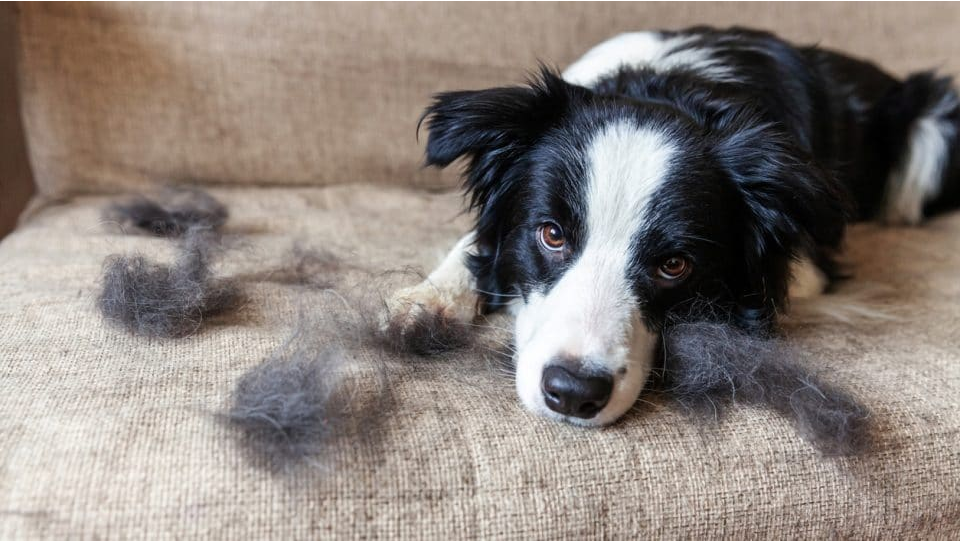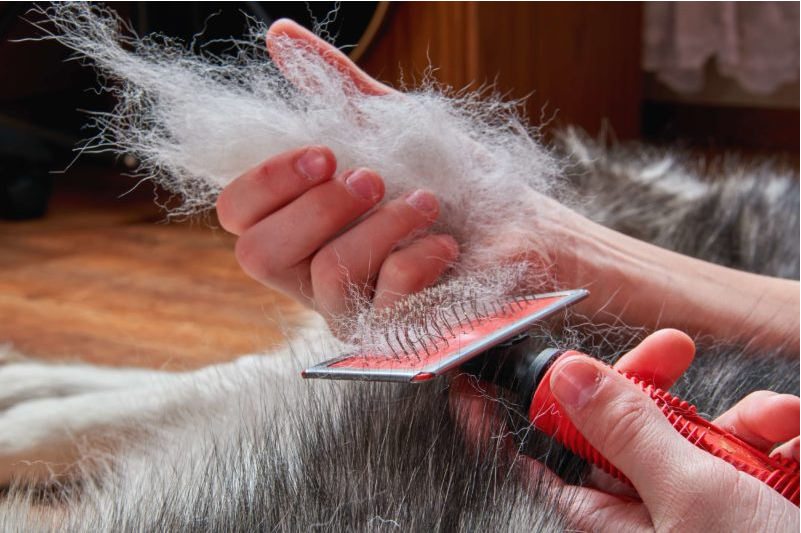1. Seasonal Shedding
If your pup is losing more hair than usual, it could be due to seasonal shedding. Depending on the breed of your dog and the climate in which you live, changing seasons can cause excessive fur falling out. This is normal and usually nothing to be concerned about; just groom your pet more often during these periods. If your furry friend's shedding persists for too long or if you notice any bald spots, however, it may be time to consult with your veterinarian who will be able to determine if there are any underlying issues that could cause the additional hair loss.
2. Change Your Pup’s Diet
If your pup is losing hair due to poor nutrition, then changing their diet may be a beneficial solution. When purchasing food for your pet, look for high-quality brands that are specifically designed for dogs with sensitive skin and allergies. These formulas tend to contain more nutrient-rich ingredients which can help promote a healthy fur coat and reduce excess shedding.
3. Provide Regular Grooming
Regular grooming can help reduce shedding, relieve skin irritation, and keep your pup looking its best. Brush your pet often with a brush that is specifically designed for their coat type. Additionally, bathe them on a regular basis to remove dirt and debris from the fur and prevent skin infections.
4. Tackle Parasites or Allergies
Depending on the cause of your pup’s hair loss, you may need to take additional steps to fight parasites or allergies. If the source of the problem is fleas, ticks, or mites then it’s important to use a pet-safe preventative treatment on your furry friend. Similarly, if your pup has allergies, then avoid potential allergen sources in their environment and consult with your veterinarian about other possible treatments that can help.
5. Reduce Stress
If your pup’s hair loss is due to stress, then it’s important to address the source of the problem. Try to keep their routine and environment as consistent as possible and provide plenty of enrichment activities that can help reduce boredom and anxiety. Additionally, you may want to consider medications or supplements specifically designed for reducing stress in pets.
By following the steps outlined above, you can help ensure that your pup stays healthy and happy while helping to prevent further hair loss.


